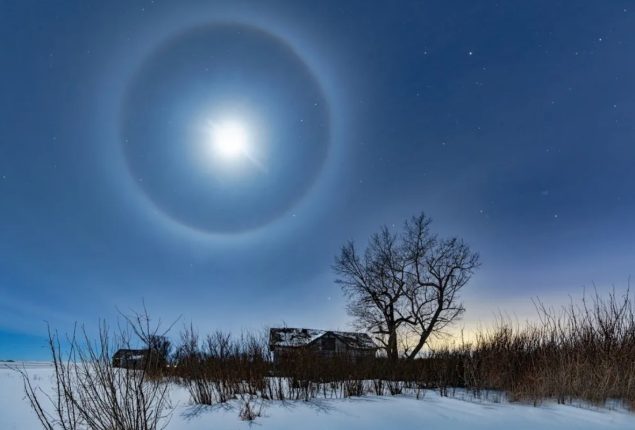Ditch the Dust: How to Properly Clean Your Monitor Screen
Use a soft microfiber cloth, avoid harmful cleaners. Never use isopropyl alcohol...

Moon Halos: Optical Illusion or Ophthalmic Warning?
In a mesmerizing display that has captivated sky gazers for centuries, the luminous halo encircling the full moon has been a subject of intrigue and wonder. Contrary to common misconceptions, this celestial phenomenon is not a trick played by the eyes but a result of specific atmospheric conditions, as revealed by experts from Columbia University.
The captivating halo effect, visible around the full moon, is attributed to the presence of frosty particles or ice crystals in the Earth’s atmosphere. These microscopic ice particles, associated with cirrus clouds found at high altitudes, scatter the moon’s light, creating the ethereal halo that graces the night sky.
Cirrus clouds, composed primarily of pure ice, form approximately 31 miles above the Earth’s surface, making them nearly impossible to observe with the naked eye due to their considerable height and thin composition.
Remarkably, regardless of geographical location or seasonal variations, the volume of the halo around the moon remains constant. Scientists have determined that the halo’s diameter is precisely 22 degrees, a phenomenon linked to the hexagonally shaped ice particles responsible for the scattering of light.
Hexagonal ice particles play a pivotal role in reflecting light in a specific manner, giving rise to the enchanting halo effect. As the moon’s radiance passes through these particles and reaches our eyes, the dispersion of light creates the circular shape that defines the moon halo.
Interestingly, this celestial spectacle is not exclusive to the moon. Halos, akin to those observed around the moon, can also manifest around other celestial bodies such as the sun. However, observing a halo around the sun can be challenging due to its intense brightness, with some locations experiencing a halo with a diameter of up to 46 degrees.
The question now arises: Is the moon halo merely an optical illusion, or could it be a subtle warning for our eyes? While scientists assert that the halo is a result of the fascinating interplay of light and ice particles, some may ponder whether prolonged exposure to such celestial displays could have implications for eye health.
As we continue to marvel at the celestial wonders above, the moon halo remains a celestial enigma, sparking curiosity about the mysteries of our atmosphere and the delicate dance of light in the night sky.
Catch all the Sci-Tech News, Breaking News Event and Latest News Updates on The BOL News
Download The BOL News App to get the Daily News Update & Follow us on Google News.